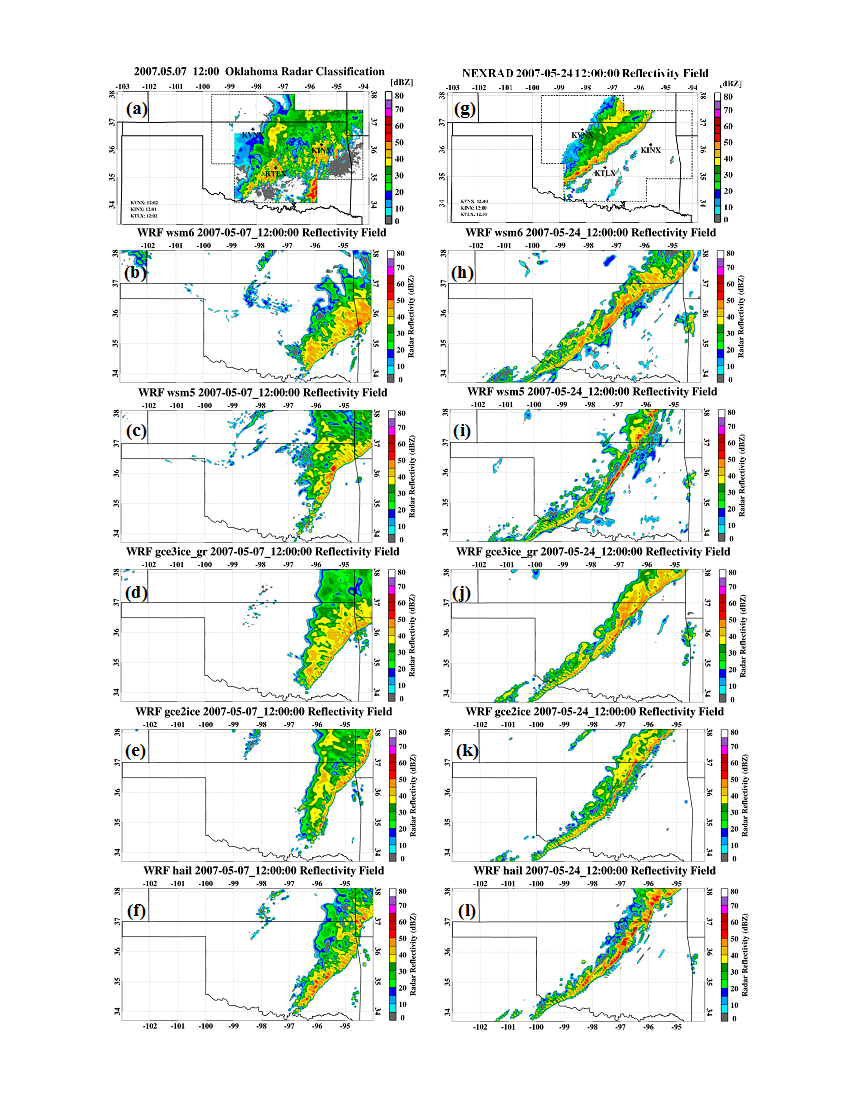Evaluation of WRF Microphysics Schemes in Squall Line Simulations
Submitter:
Dong, Xiquan — University of Arizona
Area of research:
Cloud Processes
Journal Reference:
Science
A mesoscale convective system (MCS) primarily consists of convective and stratiform regions, where significantly different microphysical and thermodynamic features are observed. Previous studies have shown that the simulated convective and stratiform features are quite sensitive to microphysics parameterizations. With the advancement of microphysics schemes, extensive validations for existing schemes are needed in order to constrain and reduce uncertainties. This study, funded by DOE’s Atmospheric System Research program and recently published on Journal of Geophysical Research, aims at evaluating existing microphysics schemes available in Weather Research and Forecasting (WRF) model with surface radar and rain gauge measurements.
Impact
In this study, the sensitivities of the storm structure to the predicted ice categories (graupel or hail) have been investigated. Several microphysics schemes are tested in this study, including the WRF 5-Class Microphysics (WSM5), WRF 6-Class Microphysics (WSM6), Goddard Cumulus Ensemble (GCE 3-ice) with graupel, Goddard 2-ice and 3-ice hail schemes. By incorporating heavier ice hydrometeors (i.e., graupel or hail), the 3-ice schemes produce quite different features than its 2-ice scheme counterparts in convective/stratiform areal coverage, precipitation intensity, and updraft/downdraft intensities. For vertical structures, all simulations have higher reflectivity values distributed aloft than the observed values in both the convective and stratiform regions. In addition, this study has demonstrated that the radar-based convective/stratiform partitioning algorithm can reasonably identify WRF-simulated precipitation, wind, and microphysical fields in both convective and stratiform regions.
Summary
Analysis performed in this study provides a framework for comparisons between cloud-resolving model simulations and geographically well-covered radar and rain gauge networks. Further investigation on different storm systems at various geophysical locations should be beneficial. This study also reveals the deficiencies in current microphysics schemes, providing guidance for model improvements. By including the graupel/hail processes (Goddard 3-ice graupel/hail and WSM6), the 3-ice schemes are able to improve the convective and stratiform features in the squall lines. However, the improvements are limited. This suggests that while the basic structure can be captured by 3-ice schemes, more complex microphysics schemes (e.g. four ice and spectral-bin) may be introduced to properly represent these evaluated features.


